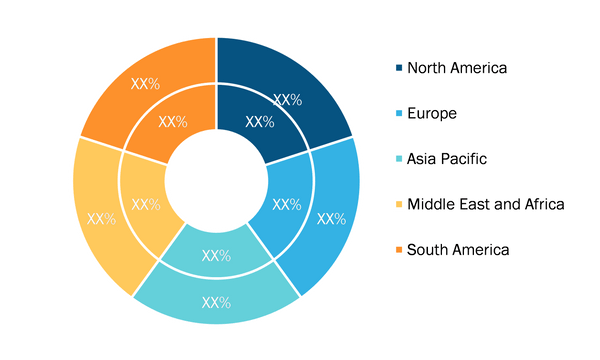Rising Production of Low-Cost Lithium Ion-Phosphate Batteries to Provide Growth Opportunities For Electric Bus Market during 2021–2028
According to our latest market study on “Electric Bus Market Forecast to 2028 – COVID-19 Impact and Global Analysis – by Vehicle Type, Hybrid Powertrain, Battery, End User, and Application,” the Electric Bus market was valued at US$ 29,179.51 million in 2021 and is projected to reach US$ 105,808.15 million by 2028; it is expected to grow at a CAGR of 20.2% from 2021 to 2028.Electric buses employ a variety of batteries. Low-cost lithium ion-phosphate batteries are becoming increasingly used in electric buses. Batteries made of lithium-ion phosphate are cost-effective and robust. Due to its speed, safety, and excellent thermal stability, lithium-ion phosphate batteries have seen a phenomenal increase in sales in recent years. The growing need for longer driving ranges has led the market participants to implement technical enhancements to increase the operational efficiency of the batteries. Electric bus manufacturers are always trying to improve efficiency and increase the range of their vehicles. Further, the production of high-density Nickel, Manganese, and Cobalt (NMC) batteries required government sactions, and intellectual property rights, therefore, new entrants entering into the market may face some challenges. In Asia Pacific, the China, Japanese, and Korean manufcaturers are the leading suppliers of LFP batteries. The governmnets in this region are supporting domestic battery suppliers which give them compitative edge over foreign competitors such as LG Chem and Samsung. For instance, CATL and BYD sold 78% of electric bus lithium-ion batteries in China in 2018, and both companies chose LFP batteries for electric buses. Thus, the rising production of low-cost lithium ion-phosphate batteries will create opportunities for the market.
The electric bus market is segmented on the basis of vehicle type, hybrid powertrain, battery, end user, and geography. Based on vehicle type, the market is segmented into battery electric bus, hybrid electric bus, and plug-in hybrid electric bus. The battery electric bus segment led the electric bus market with a share of 93.5% in 2020 and expected to account for 95.3% of the total market by 2028. Based on hybrid powertrain, the market is segmented into series parallel hybrid, parallel hybrid, and series hybrid. The parallel hybrid segment led the electric bus market with a share of 64.3% in 2020 and is expected to garner 63.6% share by 2028. Based on battery, the market is segmented into Lithium iron phosphate (LFP) and Lithium Nickel Manganese Cobalt Oxide (NMC). The Lithium iron phosphate (LFP) segment led the electric bus market with a share of 85.7% in 2020 and is expected to garner 87.3% share by 2028. Based on end user, the market is bifurcated into public and private. The public segment led the electric bus market with a share of 88.2% in 2020. Further, it is expected to garner 86.3% share by 2028. Geographically, the Electric Bus market is segmented into five key regions—North America, Europe, Asia Pacific (APAC), the Middle East & Africa (MEA), and South America (SAM). North America held the largest revenue share in 2020, followed by Europe and APAC. The electric bus market in Asia Pacifc is projected to grow at the fastest rate from 2021 to 2028.
Impact of COVID-19 Pandemic on North America Electric Bus Market
The outbreak of the COVID–19 has significantly affected the world and is continuing to shatter several countries. Until the outbreak of COVID–19, the automotive industry was experiencing substantial growth in terms of production, sales, and technological advancements.
The US automotive manufacturers witnessed the most severe impact of COVID-19 in 2020 with enactment of lockdowns and travel restrictions, shut down of production facilities, and shortage of employees. The health and economic crises led to major disruptions in the electric bus industry, impacting everything from supply chain and manufacturing to product sales. However, progress in vaccination programs and opening up of production facilities would stimulate demand for cars, thereby boosting the demand for electric bus for enhanced safety in the coming years. Initiatives such as the zero-emission vehicle mandates is projected to increase EV purchases in North America. Such policies can bolster charging infrastructure plans, and structure stimulus packages. Effective policy tools to mitigate greenhouse gases for the transport sector can further support EV adoption. This can boost the demand for electric bus market
Electric Bus Market – by Geography, 2020 and 2028 (%)

Electric Bus Market Size, Share and Growth Drivers by 2028
Download Free Sample
Electric Bus Market Forecast to 2028 - COVID-19 Impact and Global Analysis By Vehicle Type (Battery Electric Bus, Hybrid electric Bus, Plug-in Hybrid Electric Bus); Hybrid Powertrain (Series Parallel Hybrid, Parallel Hybrid, Series Hybrid); Battery (Lithium iron phosphate (LFP), Lithium Nickel Manganese Cobalt Oxide (NMC)); End User (Public, Private) and Geography
Contact Us
Phone: +1-646-491-9876
Email Id: sales@theinsightpartners.com
Electric Bus Market Size, Share and Growth Drivers by 2028
Download Free SampleElectric Bus Market Forecast to 2028 - COVID-19 Impact and Global Analysis By Vehicle Type (Battery Electric Bus, Hybrid electric Bus, Plug-in Hybrid Electric Bus); Hybrid Powertrain (Series Parallel Hybrid, Parallel Hybrid, Series Hybrid); Battery (Lithium iron phosphate (LFP), Lithium Nickel Manganese Cobalt Oxide (NMC)); End User (Public, Private) and Geography